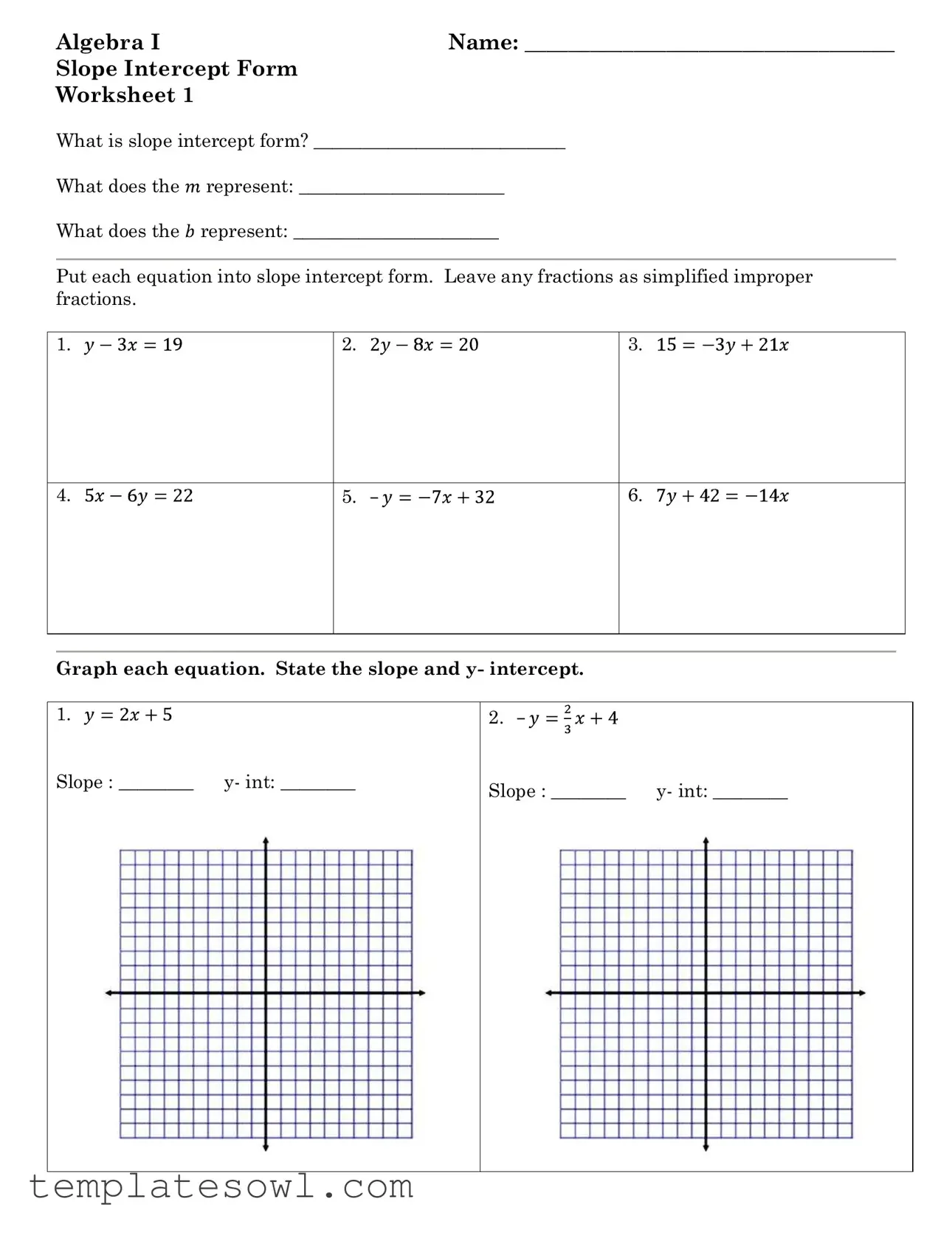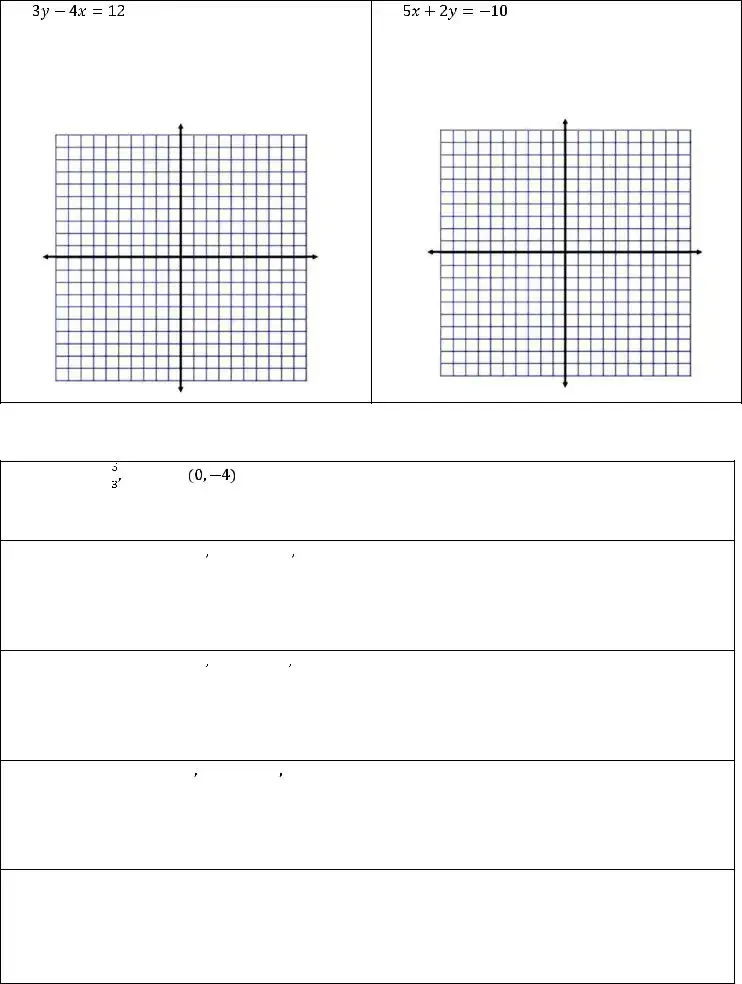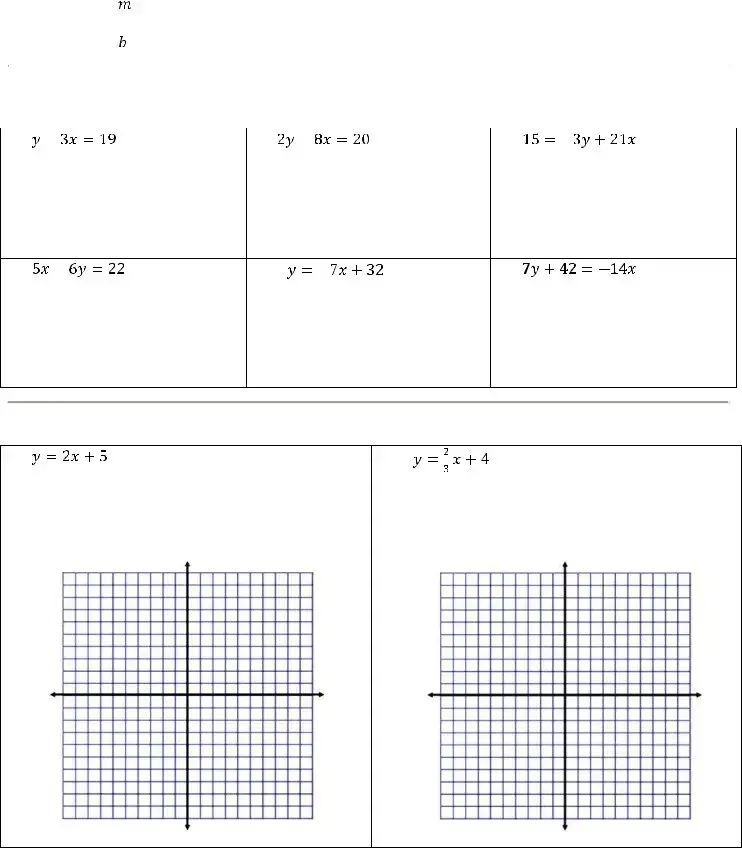What is slope intercept form?
Slope intercept form is a way to express a linear equation in the format y = mx + b. In this equation, 'm' represents the slope of the line and 'b' represents the y-intercept, which is the point where the line crosses the y-axis. This format is particularly useful for easily identifying key characteristics of a line, such as its steepness and where it intersects the y-axis.
What does the 'm' represent?
The 'm' in the slope intercept form represents the slope of the line. It indicates the rate of change of the y-value with respect to the x-value. A positive 'm' indicates that the line rises as it moves from left to right, while a negative 'm' indicates that the line falls. The larger the absolute value of 'm', the steeper the line.
What does the 'b' represent?
The 'b' in slope intercept form represents the y-intercept of the line. This is the point where the line crosses the y-axis, which occurs when the x-value is zero. The value of 'b' directly indicates how high or low the line is positioned on the graph.
How do I put an equation into slope intercept form?
To convert an equation into slope intercept form, isolate the y-variable. Start with the equation and manipulate it algebraically to solve for y. This often involves adding or subtracting other terms from both sides and dividing if necessary. For example, if you start with the equation 2x + 3y = 6, you would subtract 2x from both sides, giving you 3y = -2x + 6. Then, divide every term by 3 to find y = -2/3x + 2.
How do I graph an equation in slope intercept form?
To graph an equation in slope intercept form, first identify the slope (m) and y-intercept (b). Plot the y-intercept on the graph at the point (0, b). From this point, use the slope to find another point on the line. The slope is a ratio, so if it is positive, move up and to the right for rise over run; if it is negative, move down and to the right. Once you have at least two points, draw a straight line through them to complete the graph.
Can you provide an example of writing an equation of a line given specific information?
Yes. If the slope is 2 and the line passes through the point (1, 3), you can use the slope-intercept form. Substitute the slope (m = 2) and the coordinates of the point into the equation y - y1 = m(x - x1). This gives you y - 3 = 2(x - 1). Expanding and solving gives you y = 2x + 1, which is the equation of the line.







 and
and 





 and
and 





 and
and 






 and
and 


